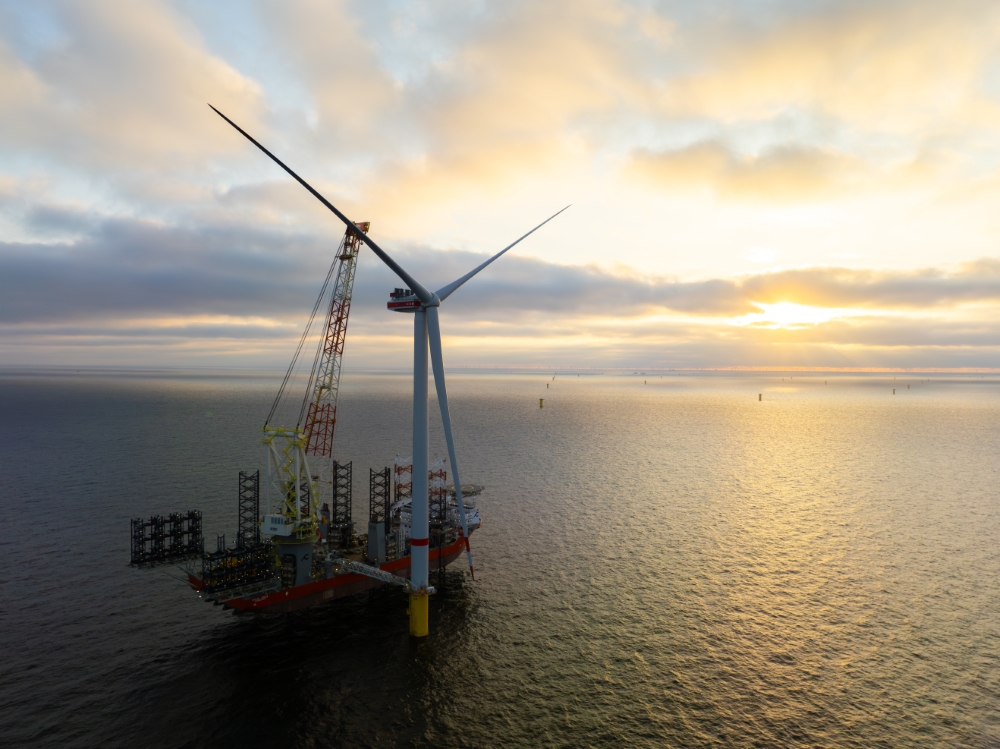It’s hard to doubt the power of a cool breeze.
Scouting the world’s blustery breezeways has resulted in over 1,136 gigawatts (GW) of total cumulative wind energy capacity installed across every continent. Yes, Antarctica included.
In 2024, five countries — China, the United States, Germany, India and Brazil — were responsible for the majority of new wind turbine installations. China led with 79,824 megawatts (MW) or 79 GW, nearly 20 times the totals in the United States (4,058 MW) and Germany (4,022 MW). As a whole, the global industry set a record installation high by introducing 117 GW of new capacity, according to new data released by the Global Wind Energy Council.
“Once again, the wind industry has broken new installation records, despite more challenging macroeconomic headwinds over the last few years,” said GWEC CEO Ben Backwell. “While wind energy continues to drive investment and jobs, improve energy security and lower consumer costs, we are seeing a more volatile policy environment in some parts of the world, including ideologically driven attacks on wind and renewables and the halting of under-construction projects, threatening investment certainty.”
While the U.S. has found its way up the ranks, the Trump Administration could throw a wrench in the works of the nation’s industry. Empire Offshore Wind LLC, which is currently in the midst of constructing a $5 billion offshore wind farm off the coast of New York, was forced to halt project activity for an entire month until a stop work order was lifted following environmental reviews made by the U.S. Department of Interior’s Bureau of Ocean Energy Management in late May 2025.
The move came as a shock to the industry since Empire Wind 1 was already in motion with the required permitting, contradicting an executive order signed by President Donald Trump in January to cease leasing areas on the Outer Continental Shelf for new wind energy projects. As of now, work has resumed on the 810 MW project, which is expected to power 500,000 homes in the state by late 2027. Moving forward, lingering uncertainty felt by developers and potential tariff impacts may very well spell trouble for the nation’s offshore wind portfolio.
“EnBW has been planning, building and operating offshore wind farms in Germany and Europe for over 15 years.”
— Michael Class, Head of Generation Portfolio Development, EnBW
The European Perspective
However, we can expect a boost in onshore wind projects to hit the international pipeline in years to come, as auctions and other procurement mechanisms doubled over the course of 2024. Europe led this activity, awarding 17 GW of onshore wind volume, up 24% from the year prior. While this data is promising onshore, Europe’s wind industry is looking to European governments to auction a minimum of 100 GW of offshore wind installations by 2040.
WindEurope, an association of more than 500 wind industry members across over 50 countries, released a new wind deal proposal in April 2025. The initiative aims to expand offshore wind opportunities, noting poor auction design practiced across Europe for the past decade. This problem became prevalent as energy concerns raised by geopolitical tensions bubbling between Russia and Ukraine led to ambitious project approvals that bore more market challenges and economic uncertainty than anticipated for developers.
“What should have been the platform for accelerating offshore wind has instead led the industry into a negative spiral, which holds a real risk of industry stagnation and that even awarded European projects will be cancelled as we have seen in the U.S.,” the report notes. “Analysts also assess that more than 20% of the European projects in the current environment are at risk of being delayed and/or cancelled, which will have detrimental consequences for not only the offshore wind industry, but for Europe’s energy future.”
To take a fresh approach to future offshore wind installations, WindEurope has highlighted two critical priorities: committing to at least 100 GW of Contracts for Difference over the next 10 years with firm political commitment through fixed price and indexed contracts; and planning flexible project commissioning deadlines to evenly introduce 10 GW per year from 2031 to 2040 to create market predictability through cross-border planning while optimizing supply chain utilization and investments.
The new deal is backed by industry heavyweights such as Energie Baden-Württemberg (EnBW), GE Vernova, Ørsted, Siemens Energy and Vestas, who hope to collaborate alongside government officials to cultivate a framework that increases de-risked and commercially viable capacity while also reducing costs associated with offshore wind projects. In return, the industry has promised to deliver capital for investments and job creation, reduce cost of electricity by 30% into 2040 and create lasting community value through its economic activity.
If European governments take heed of the proposal, WindEurope sees an avenue to restore investor confidence, raise industrial competitiveness and ultimately reduce electricity costs for millions.
It Spins
Regardless of what’s to come, Energie Baden-Württemberg (EnBW) AG has set out in the North Sea with plans to establish Germany’s largest offshore wind farm. Just shy of one year since work began, EnBW announced that construction of its first wind turbine is now complete.
Dubbed “He Dreiht,” which translates to “It Spins,” the transformative $2.7 billion project will be the company’s third wind farm initiative in the North Sea. EnBW has located He Dreiht adjacent to its established Hohe See and Albatross wind farms, positioned about 55 miles northwest of Germany’s island of Borkum.
“EnBW has been planning, building and operating offshore wind farms in Germany and Europe for over 15 years. EnBW He Dreiht is our largest offshore project to date and is being built without state funding,” said EnBW Head of Generation Portfolio Development Michael Class. “It will play a key role in helping us to achieve our goal of significantly increasing installed output from renewable energies from the current figure of 6.6 GW to over 10 GW by 2030.”
Introduction of the first of 64 total wind turbines planned for He Dreiht marks the first application of the world’s largest 15-MW wind turbine currently available from Denmark-based manufacturer Vestas.
For context, a single rotation of the robust Vestas V236-15 turbine creates enough electricity to power four homes for an entire day. Each massive turbine showcases how crucial global industry collaboration is to the success of this offshore wind technology, as each component from blades to monopile to tower originates from a different European country.
Once all turbines are installed the farm will have an output of 960 MW, or enough power to supply 1.1 million households, increasing EnBW’s offshore wind portfolio to 976 MW by 2026.

